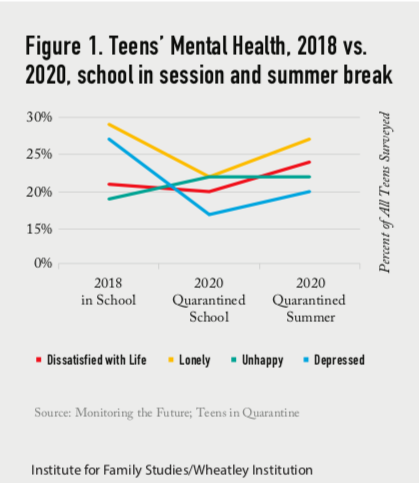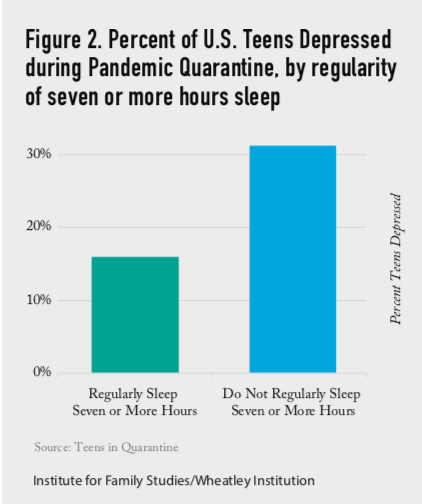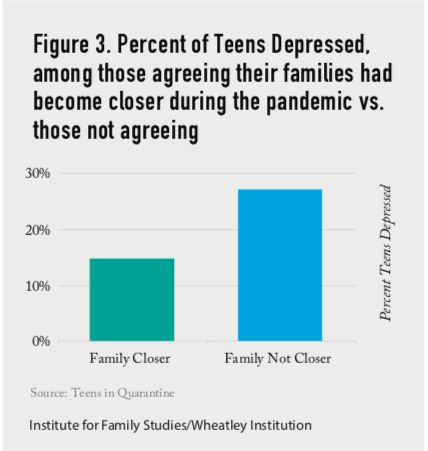Highlights
Print Post- Depression and loneliness were actually lower among teens in 2020 than in 2018. Tweet This
- It appears that one of the primary foundations for teen resilience during the pandemic is family support and connection. Tweet This
- Teens who spent more time with their families during the pandemic and who felt their families had grown closer were less likely to be depressed. Tweet This
In March 2020, life changed very suddenly for Americans. As the COVID-19 pandemic took hold, work and school moved online, restaurants closed, and unemployment soared. The effects on mental health were immediate: U.S. adults in spring 2020 were three times more likely to experience mental distress, anxiety, or depression than adults in 2018 or 2019.
But what about American teenagers? With teens no longer going to school and often not able to see friends, many people worried about how teens would deal with the stresses and changes of the pandemic. To better understand the experiences of teenagers during this unique time, we fielded our Teens in Quarantine survey of 1,523 U.S. teens during May–July 2020, asking about their mental health, family time, sleep, technology use, and views on the race-related protests and the police. We then compared our 2020 teens’ responses to responses to identical questions from the 2018 administration of the national Monitoring the Future survey. Responses from 2018, before COVID-19 existed, served as a useful control for investigating the effects of quarantine on teens. Like Monitoring the Future, our survey gathered responses from 8th, 10th, and 12th graders.
We found that most teens fared relatively well during the pandemic, mainly due to more time with family and additional sleep. However, teen well-being varied by family support and connection, as well as by financial distress.
Among the report's key findings:
- Depression and loneliness were actually lower among teens in 2020 than in 2018, and unhappiness and dissatisfaction with life were only slightly higher.

- Trends in teens’ time use revealed two possible reasons for the unexpectedly positive outcomes we found: Teens were sleeping more and spending more time with their families.

- Despite worries that they would spend even more time on digital media than before the pandemic, teens in 2020—at least during the school year—spent less time on social media and gaming than had teens in 2018. However, they did increase their consumption of TV and videos.
- While the overall trends for mental health and screen time are encouraging, these patterns were not uniform across all teens. In particular, overall mental health was significantly better for teens in two-parent families, both before and during the pandemic. Teens who spent more time with their families during the pandemic and who felt their families had grown closer were less likely to be depressed. Thus, it appears that one of the primary foundations for teen resilience during the pandemic is family support and connection.

- Teen well-being was also impacted by financial distress during the pandemic: 25% of teens whose parent had lost a job reported being depressed, vs. 16% of teens without a parental job loss. And 26% of teens who were worried about their family not having enough money were depressed, vs. 13% who did not have this concern.
Overall, our results reveal a nuanced picture of teens during the pandemic quarantine: They were resilient yet worried, isolated yet connected to family, and well-rested yet concerned.
Download the full report, Teens in Quarantine.
